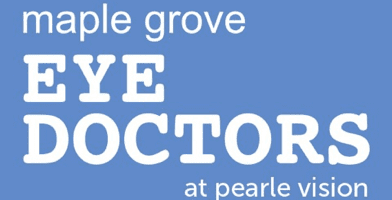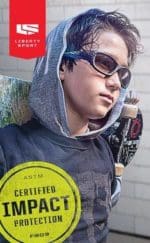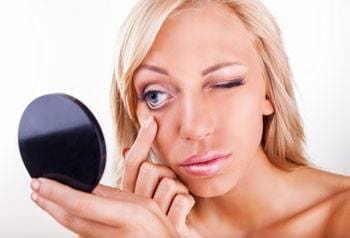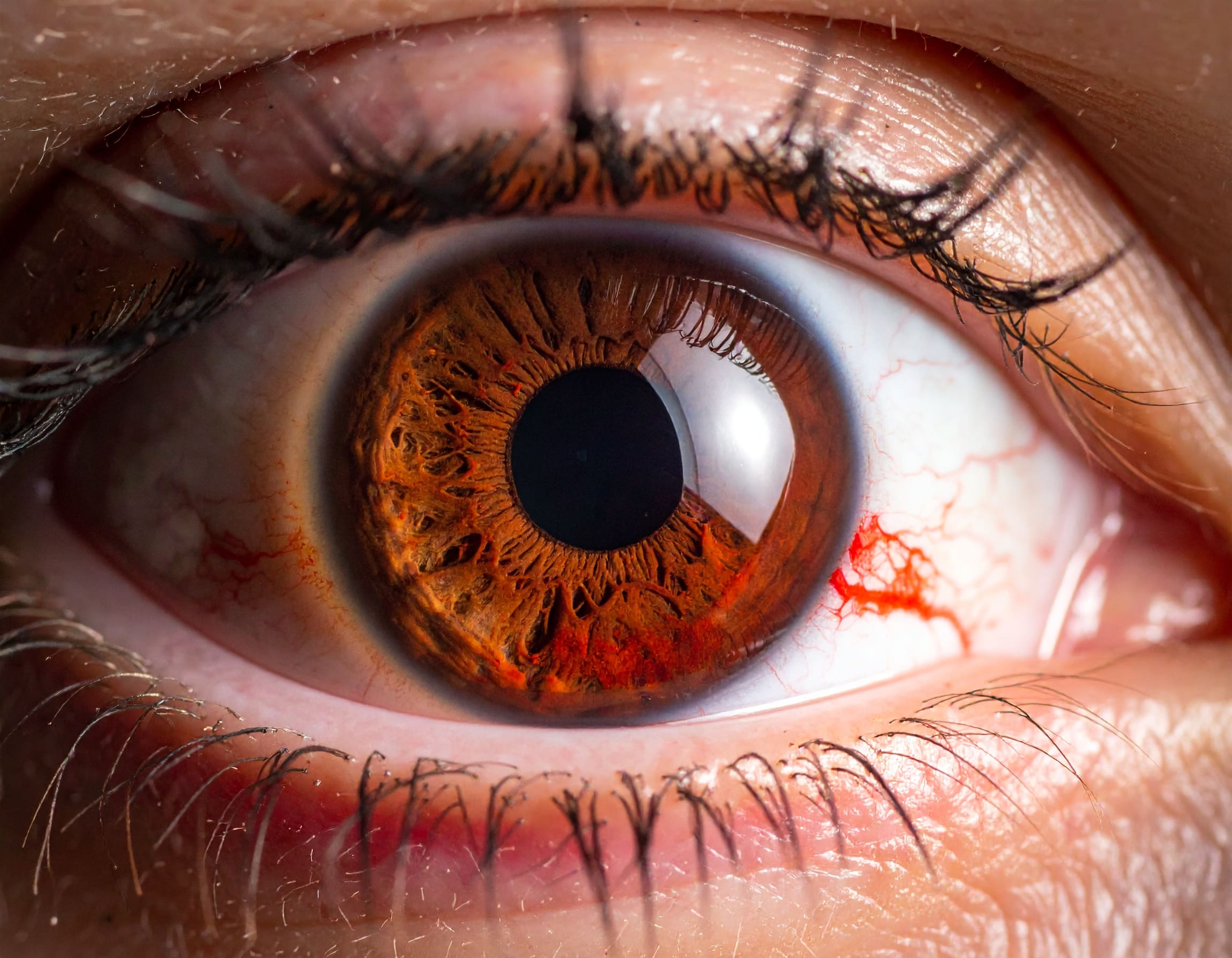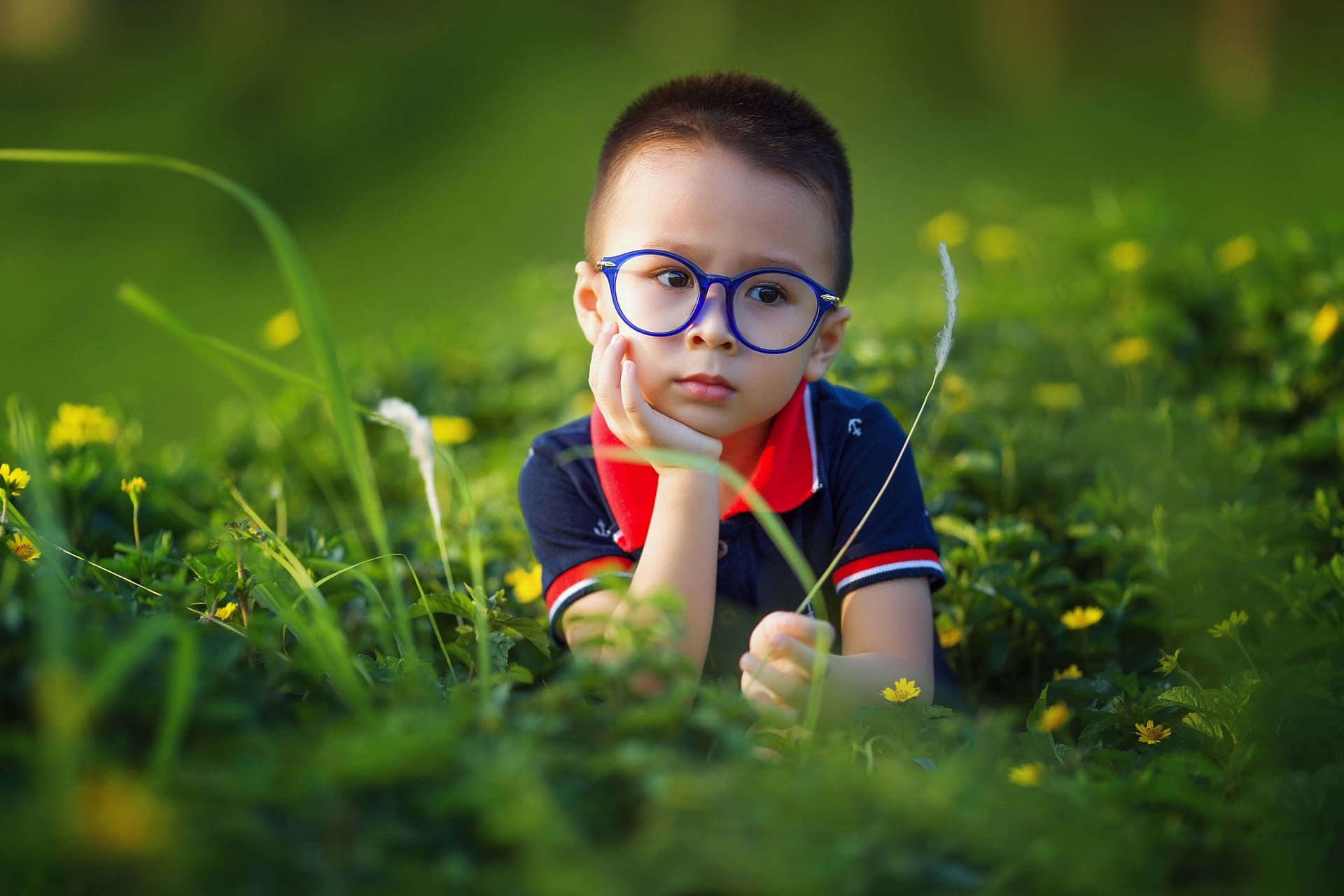Whether kids wear glasses or not, when they play sports like baseball, soccer, golf, they do need to wear protective eyewear to protect their eyes and the area around their eyes such as the orbital bone.
If a child has a correction and wears glasses they need special sports glasses with their prescription in them; they should NOT just wear their prescription glasses, which may cause more harm in the event that they are hit with a ball. Any sport in which balls, racquets or flying objects are present pose a potential for eye injury. Being hit with a soccer ball or a baseball can injure the eye and could possibly cause blindness? See the difference in impact to the eye with and without sports protective eyewear
A child should never play hockey without wearing a face mask. Hockey pucks are very dense and hard, and when one hits an eye at high speed, it can cause vision loss and even total blindness.
What Do The Statistics Say?
An eye accident only takes an instant to impact a child’s vision for a lifetime. In fact, eye injuries are a silent epidemic in youth sports. Every year, more than 40,000 eye injuries result from sports and recreational activities, according to the American Academy of Ophthalmology. More eye injuries occur from water and pool activities than any other sport, as per recent data from Prevent Blindness. Eye injuries from water sports include eye infections, irritations, and scratches or trauma from other swimmers.
Children are particularly vulnerable to sports injuries due to their developing depth perception. This highlights the importance of safety goggles. Since 90% of these injuries are preventable with the help of protective equipment, goggles come to their rescue. These can help kids avoid serious impact injuries around the eyes and irritation when swimming in fresh or chlorinated water.
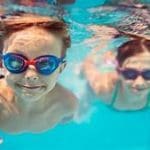
The Importance of Quality Sunglasses
Children should start to wear sunglasses as early as possible — to get used to wearing them and also to protect their eyes from glare and UV damage, especially for blue-eyed children who are more sensitive to sunlight. These can also help kids get used to wearing sports glasses. Injuries can range from having foreign bodies in the eye to minor corneal scrapes and bruising to severe trauma leading to visual impairment or blindness. Thus, kids must only wear quality glasses from a reputable optical store. Three important reasons for investing in quality glasses include:
- The UV protection is guaranteed with a high-quality lens
- The frame will be fit to their face and be more comfortable
- They’re more likely to be more comfortable and to keep them on

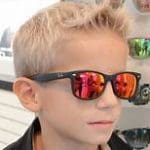
Ensuring Children’s Eye Safety On and Off the Field
If your child wears prescription glasses, you might assume they are adequately protected. However, standard glasses can shatter upon impact in no time, posing even more significant risks. Sports goggles, on the other hand, are designed with materials like polycarbonate, known for its strength and impact resistance, ensuring maximum protection.
We usually recommend photochromic lenses for children when they have a correction and need to wear glasses. Photochromic lenses become darker outside and provide UV protection. This also eliminates the need for a separate pair of sunglasses. Depending on the child’s activities, polarized lenses are a benefit because they cut glare and would be recommended if a child is spending a lot of time near water – lakes or swimming pools.
Choosing Tints for Sport-Specific Vision
Good vision is essential for sports performance. Tinted eyewear can play a pivotal role in optimizing vision for various sports:
- Blue or Purple Tints: These are particularly beneficial for sports played in snowy conditions, like skiing or snowboarding, requiring a clear perception of contours. They amplify the contrast, especially against white backgrounds, enhancing visibility in hilly terrains or slopes, i.e., they can help in highlighting the white of the ball or the snow.
- Red or Rose Tints: These tints are best suited for lower light conditions, such as early morning baseball practices or late afternoon cycling rounds. They uplift visual clarity, reduce eye fatigue, and provide a more transparent view of objects in such conditions. In short, red or rose tints enhance visual depth and reduce eye strain
- Brown or Copper Tints: Ideal for activities like tennis, golf, or even fishing. They augment contrast, predominantly when the background consists of blue skies and green fields. These assist in better ball tracking or spotting subtle movements in water.
The Perfect Fit Matters
An eye accident can happen at any time but is more likely to occur when playing a sport and can change a child’s vision for life. Is it worth taking a chance?
To a point, sports goggles can be fit with ‘room to grow.’ Some growing room is acceptable, and sports goggles are made to be somewhat flexible in their width adjustment. But if the frames are too large and don’t fit properly, the amount of protection they provide will be compromised, increasing the risk of eye injury. It’s a risk not worth taking. By the same token, permitting a youngster to continue wearing goggles that he or she has outgrown can be just as dangerous, obstructing peripheral vision and being uncomfortable.
Achieving the right fit is all about comfort, safety, and enhanced performance. This ensures that your little athletes can focus entirely on the game and not get carried away fixing straps or nose pads.
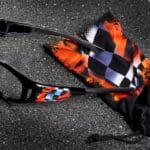
These goggles should feel snug but not too tight, ensuring they don’t slip during intensive activities. The padding inside the sides of the goggles should rest flush with the face, and the eyes should be centered horizontally and vertically in the lens area. Adjustable or rubber nose pads and temple grips can also be helpful.
Sports goggles come in a variety of shapes and sizes. Many are designed for racquet sports and are available for basketball and soccer. Some are even designed to fit inside helmets used for American football, hockey, and baseball. Sports goggles should allow the use of helmets when the sport calls for it.
An eye accident can happen at any time but is more likely to happen when playing a sport, and can change a child’s vision for life. Is it worth taking a chance?
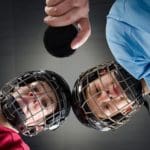
A Durable, UV-Protective Choice for Sports Eyewear
Lenses in sports eyewear are usually made of polycarbonate, which has a scratch-resistant coating on both the front and back surfaces for added durability. Since polycarbonate is such an impact-resistant lens material, it works well to protect eyes from fast-moving objects. Polycarbonate also has built-in ultraviolet protection — a valuable feature for outdoor sports. Some sports styles are contoured, wrapping slightly around the face. This type of goggle works well for biking, running, and baseball. Contact lens wearers especially benefit from the wraparound style, which helps keep out wind and dust.
Cultivating Good Habits
Instilling the habit of wearing protective eyewear in kids from a young age sets the foundation for a lifetime of eye safety. Knowing they are protected can also boost their confidence ten times. With the right eyewear, children can focus solely on the game, improving not just their safety but also their performance. Gradually, when kids understand the importance and get accustomed to wearing high-quality sports goggles or sunglasses, they are more likely to continue these practices into adulthood, safeguarding their now and tomorrow.
Yearly Check-ups Are Essential
As we mentioned earlier, the right protective eyewear doesn’t just shield the eyes; it can also enhance sports performance, ensuring that your child enjoys the game with crystal clear vision. Even if your child has perfect vision or uses corrective lenses, regular eye exams are non-negotiable. These check-ups can help detect subtle vision changes and make sure the sports eyewear prescription remains up-to-date.
Prioritize Your Child’s Eye Safety in Sports
Protecting your child’s vision is of utmost importance. From the baseball field to the swimming pool, make sure their eyes remain shielded from potential injuries and irritants. At Maple Grove Eye Doctors, we offer tailored solutions for every young athlete. Investing in high-quality protective eyewear and sunglasses is a small step towards significant benefits. Please schedule a consultation today and let us help you make informed decisions with the right eyewear for your child’s eye safety.
